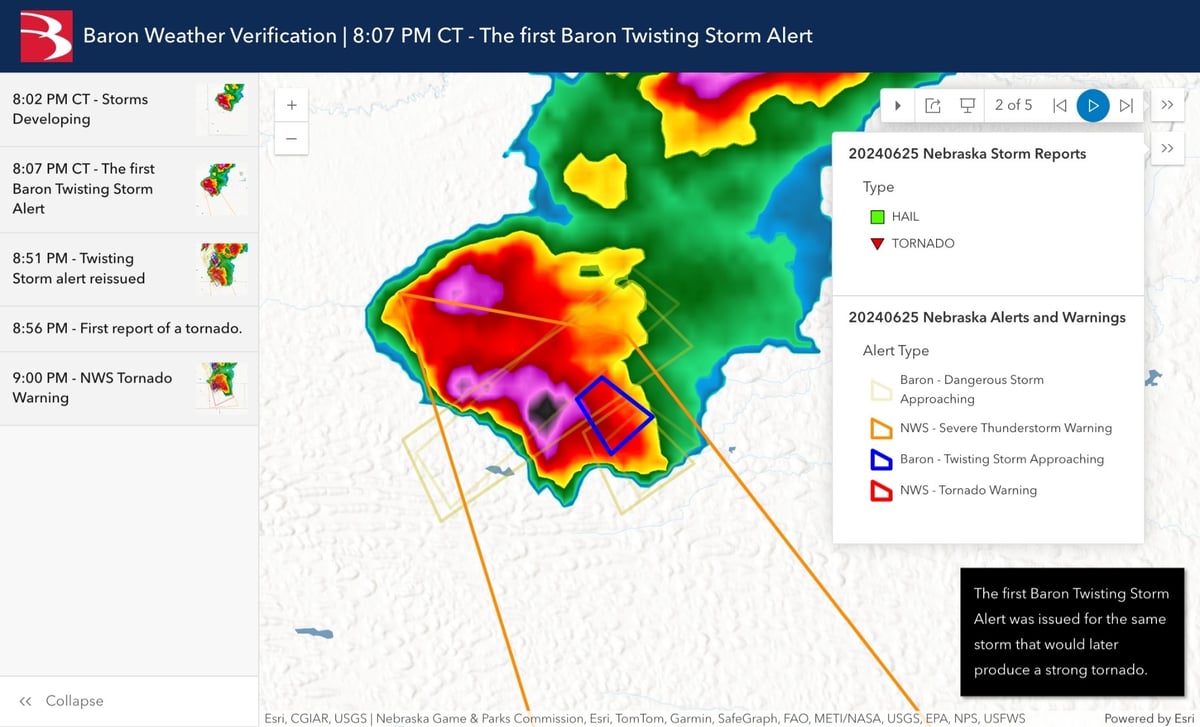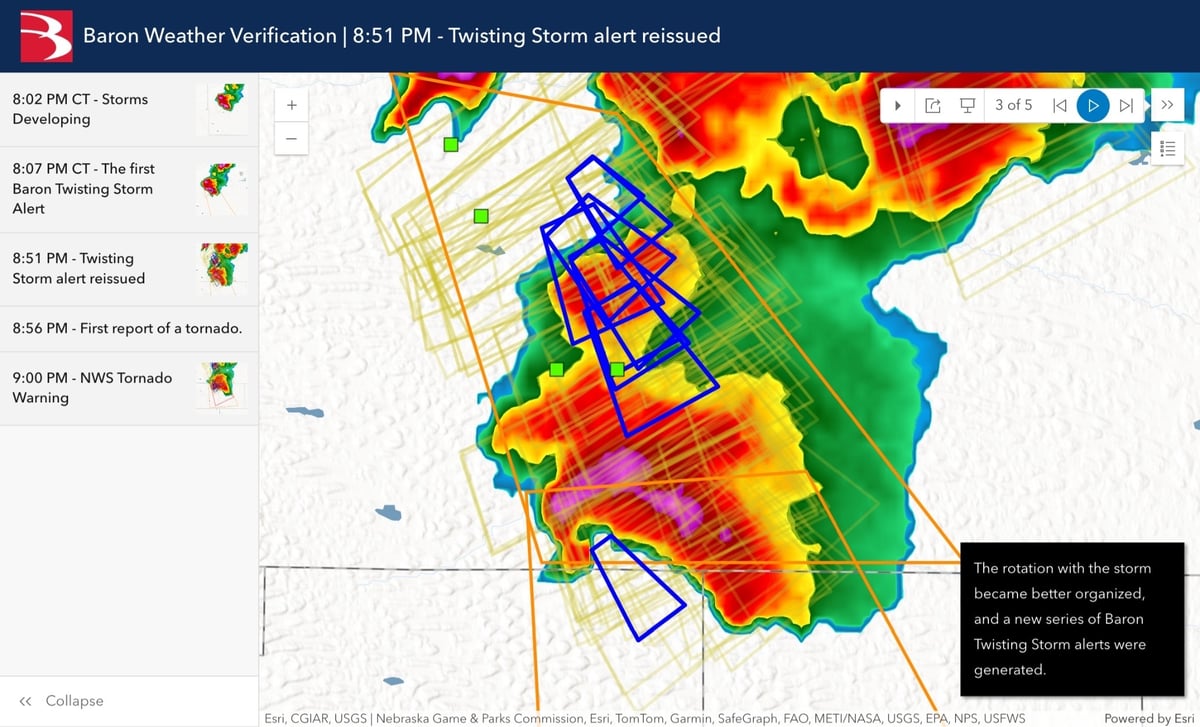It’s difficult to imagine how a tornado can go unwarned in today’s age of technology and artificial intelligence. But it does happen. At least for those who subscribe to only one form of alerting.
You likely use cloud computing and redundancy to ensure continuity of your operations. So why would you rely on a single source for a critical weather alert?
Multiple layers of alerting and smarter weather data from a reliable source are key to avoiding unexpected threats to your people or property. And Baron delivers both.
The Latest Proof of Baron’s Automated Alerting
An EF-3 tornado ripped through primarily rural areas of northern Nebraska on the evening of June 25, 20241. It did damage a farmstead and injured one person near Whitman, NE. As this was occurring, several noted on social media that a tornado warning had not yet been issued.
Based on an exclusive spin detection algorithm, the first Baron Twisting Storm Alert was generated at 8:07 pm CT. The rotation was initially intermittent, but a more consistent string of Twisting Storm Alerts began at 8:50 pm CT. A local sheriff relayed the first tornado report at 8:56 pm CT, followed by a Tornado Warning from the National Weather Service (NWS) at 9:00 pm CT.
The slide show below identifies key moments in the storm’s evolution and how Baron’s weather data and alerting captured the event. You can advance through five key moments in the storm's evolution.
Baron’s advanced alerting provides an extra layer and unique level of protection when minutes matter the most. A Baron Twisting Storm Alert is automated and projects a tornado’s precise path, which is much narrower than the storm’s rain or hail swath. This mitigates false alarm rates and eliminates confusion when a severe thunderstorm can present multiple threats.
A trained meteorologist triggers an NWS warning based on their skilled interpretation of radar data or a verified report. It’s important to understand the complementary methods of both types of alerts and recognize their roles in formulating a quick and effective response to keep your people safe.
The Value of an Extra Layer of Alerting
There is no doubt that decades of progress made by scientists at the NWS on severe weather forecasting, detection, and alerting have saved countless lives. Even still, more than one in ten strong tornadoes (EF-2+) are inadequately warned. Probabilities of detection are even lower (63%) for weaker tornadoes but remarkably higher (99%) for violent tornadoes (EF-4+), according to research published in 20212.
Multiple factors can affect the detection rate of a tornado warning, including the storm’s distance from radar, time of day, or even time of year. While standard warning practices are set forth by the NWS, subtle differences can exist between field offices and their employees that might lead to detection inconsistencies between regions. The computer-generated alerts from Baron can be your backstop to catch all potential threats.
Why Choosing Free Data Can Be Risky
Who doesn’t like free data? The NWS provides an incredible number of resources through its various public websites and API endpoints. According to the online news source Axios, a “pattern of outages” has emerged that impacts the public’s ability to receive timely warnings.
Senior Climate Reporter Andrew Freedman noted that NWS’s aging infrastructure was “inhibiting” life-saving alerts from reaching the public, despite significant forecasting improvements and millions of dollars being steered to NOAA in recent years.
When you choose a premium weather data provider such as Baron, you eliminate points of failure and invest in a resource with a nearly perfect uptime record. The Baron Weather API includes the same commodity weather data you would have to get in line for with the NWS, along with dozens of exclusive datasets that enable your team to make better decisions.
Baron’s weather data is backed by multiple data centers, uses Internet and satellite-based sources for enhanced reliability, and is supported by a team of meteorologists who work around the clock to ensure its accuracy and accessibility. Combining reliable data and automated alerting can give your organization more peace of mind when nature’s most violent weather phenomenon threatens.
1 Based on preliminary storm survey results from the National Weather Service on June 27, 2024.
2 Anderson-Frey, A. K., & Brooks, H. (2021). Compared to What? Establishing Environmental Baselines for Tornado Warning Skill. Bulletin of the American Meteorological Society, 102(4), E738–E747. https://doi.org/10.1175/bams-d-19-0310.1










